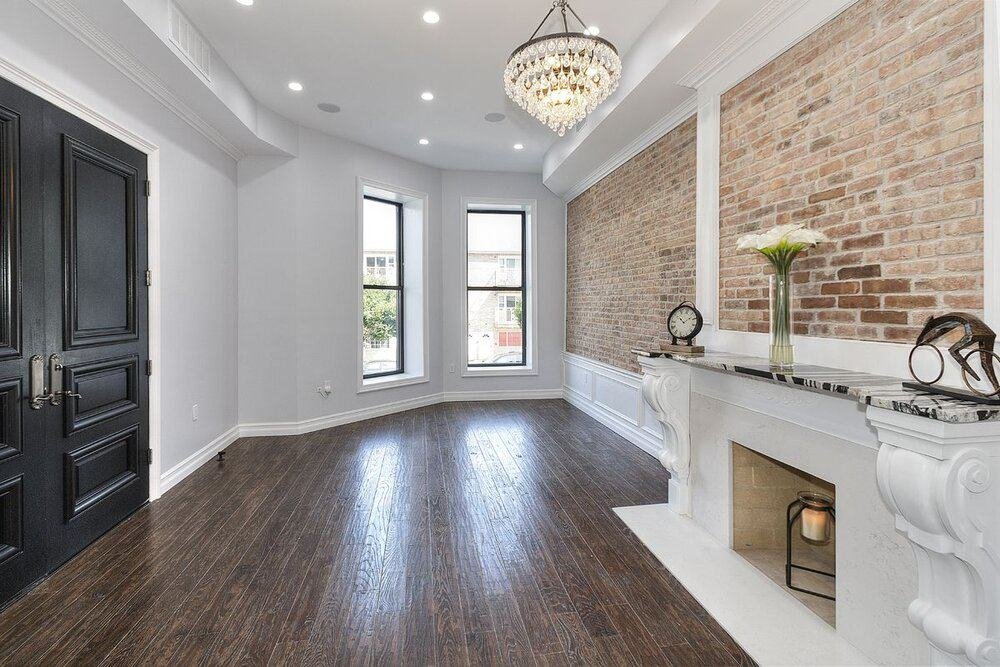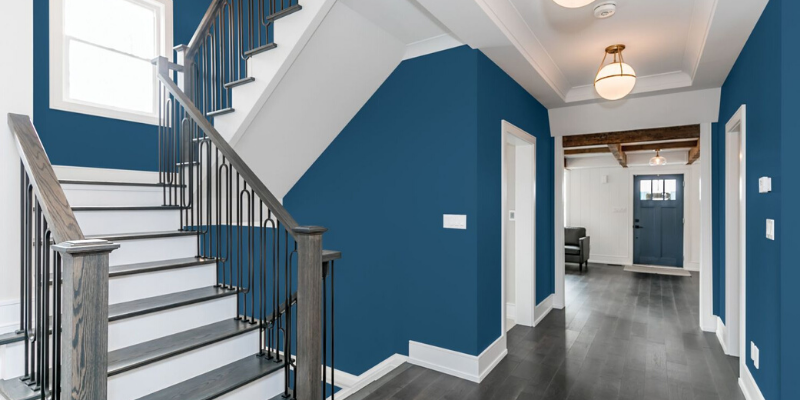Reliable Lakewood Interior Painting for Creating the Perfect Ambiance in Your Home
Reliable Lakewood Interior Painting for Creating the Perfect Ambiance in Your Home
Blog Article
Enhance Your Interior Design With Comprehensive Shade Appointment
The combination of shade consultation into indoor layout offers an unique chance to fine-tune and boost the visual and emotional vibration of a space. By engaging with an experienced color consultant, you can browse the complexities of shade selection, making sure that your options not just complement architectural features but also reverberate with personal design and psychological impact.
Benefits of Shade Consultation

Furthermore, color examination aids in making the most of all-natural light and optimizing spatial understanding. Lighter colors can make an area show up more large, while darker tones develop an intimate setup. Cleveland Metro Painting Specialists. This critical application of shade can significantly affect the overall ambiance of any interior space
Furthermore, professional specialists possess an extensive understanding of ageless classics and current trends, ensuring that the chosen shades will certainly continue to be enticing over time. This insight can conserve customers from expensive redesigns in the future. Color assessment encourages clients by providing them with a clear vision and instructions, promoting self-confidence in their style choices and ultimately leading to a more effective and rewarding indoor layout result.
Comprehending Shade Psychology
The relevance of shade psychology in interior decoration can not be overemphasized, as it looks into the emotional and emotional results that different hues can evoke in people. Colors can affect state of mind, behavior, and even performance, making them a crucial factor to consider in any design task.
For instance, cozy shades such as red, orange, and yellow are typically associated with power and warmth. They can boost feelings of exhilaration and comfort, making them appropriate for social rooms like living rooms or kitchen areas. Alternatively, amazing colors like blue, environment-friendly, and purple have a tendency to stimulate peace and tranquility, making them suitable for rooms or reflection locations.
Additionally, the use of neutral tones can produce a well balanced setting by allowing the bolder colors to attract attention without overwhelming the senses. Recognizing these psychological impacts enables designers to create spaces that not just look aesthetically pleasing but also promote emotional well-being.
Incorporating shade psychology into indoor layout entails a thoughtful option of tones customized to the desired feature of each area, eventually improving the general experience for its owners. This understanding is crucial for achieving a functional and harmonious indoor setting.
The Shade Wheel Described
Recognizing the connections between shades is essential for reliable indoor style, and the shade wheel serves as a beneficial device in this procedure. The shade wheel, developed by Isaac Newton in the 17th century, highlights the spectrum of colors prepared in a circular format. It comprises primary shades-- red, blue, and yellow-- that can not be produced by mixing various other colors. Secondary shades, developed by combining primaries, consist of green, orange, and purple. Tertiary colors arise from mixing a primary and a second color, resulting in colors such as blue-green and red-orange.
The shade wheel aids designers comprehend the relationships in between shades, consisting of corresponding, analogous, and triadic schemes. Corresponding shades, located contrary each other on the wheel, develop vivid contrasts that can energize a space.
Making use of the color wheel in interior decoration not just improves visual allure but also evokes certain feelings and ambiences, making it a critical reference for color consultation. Comprehending these partnerships inevitably empowers designers to produce areas that are both visually captivating and functional.
Selecting the Right Combination
A well-chosen shade plan can unify a room, improve its attributes, and stimulate desired feelings. Different rooms serve diverse functions and need combinations that show their desired use; for circumstances, tranquil colors such as soft blues or eco-friendlies function well in bed rooms, advertising relaxation.
Following, think about the all-natural light available. Light can substantially change just how colors show up, so it is important to analyze the room at various times of the day. In addition, think about existing building elements and home furnishings. An unified palette needs to complement these functions, producing a cohesive look throughout the room.
When picking shades, make use of the 60-30-10 rule, which suggests that 60% of the area must be a leading shade, 30% a secondary color, and 10% an accent shade. This proportion makes certain equilibrium and aesthetic passion (Cleveland Metro Painting Specialists). Finally, sample colors on the walls before committing, as this enables you to see just how the hues interact with each other and the total setting they develop in your indoor layout job.
Collaborating With a Shade Professional

When dealing with a color consultant, the procedure usually starts with a first consultation. Throughout this conference, you'll review your vision, preferences, and the existing aspects in your space. The specialist will examine your needs and may suggest particular color palettes that align with your goals.
After establishing an instructions, the professional will certainly offer samples and visual help to help you envision the proposed color pattern. This step is vital, as shades can show up differently under differing illumination conditions.
In addition, a color specialist can direct you in picking complementary furnishings, artwork, and devices to harmonize with your chosen combination. By working together carefully, you can achieve a polished visual that raises your insides and creates a welcoming environment. Ultimately, the experience of a color consultant can dramatically improve the total effect of your layout task.
Final Thought
In summary, detailed color appointment works as a vital tool for improving interior decoration. By leveraging specialist understanding of color psychology and spatial characteristics, a customized shade combination can be developed look these up to evoke details emotions and develop a harmonious atmosphere. This calculated method not just fosters a cohesive layout narrative however also mitigates the threat of costly redesigns. Eventually, involving with a color expert ensures a notified and visually pleasing end result, boosting the overall experience of the area.
By engaging with an experienced color specialist, you can navigate the complexities of color choice, making certain that your selections not just enhance architectural functions but likewise reverberate with personal style and mental impact. It comprises main shades-- red, blue, and yellow-- that can not be developed by mixing various other shades.The color wheel helps designers grasp the partnerships between shades, including complementary, analogous, and triadic plans.When selecting shades, make use of the 60-30-10 rule, which recommends that 60% of the area ought to be a their website dominant color, 30% a second color, and 10% an accent shade. By leveraging specialist understanding of color psychology and spatial characteristics, a customized shade palette can be developed to stimulate particular emotions and develop a harmonious setting.
Report this page